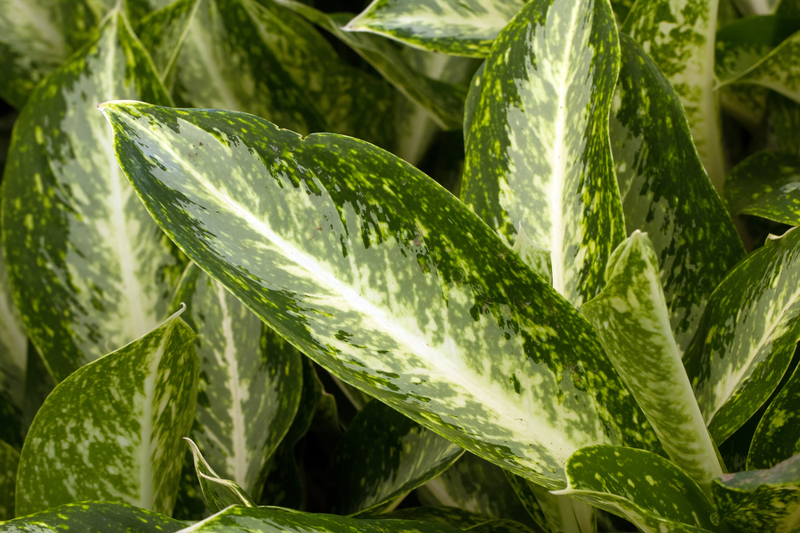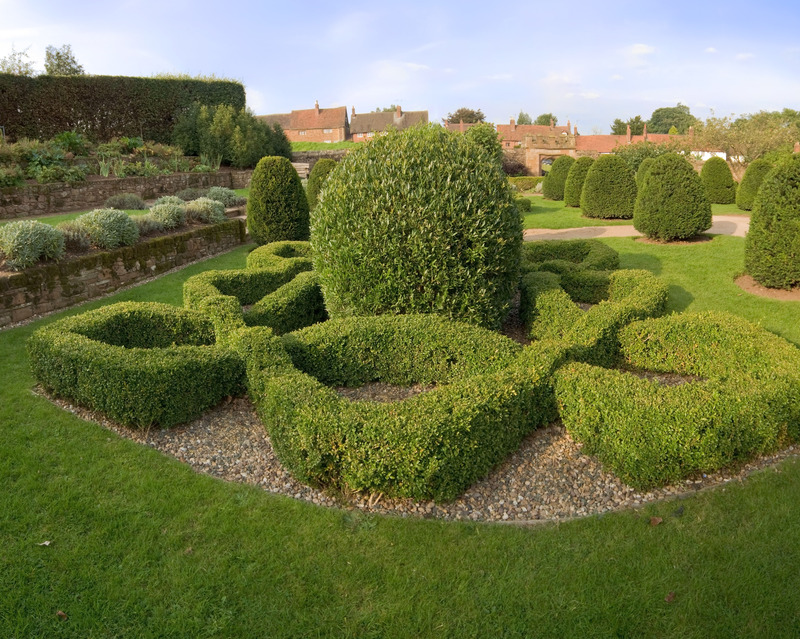Elevate Your Small Garden with These Evergreen Tree Picks
Transform your limited garden space into a lush, green paradise all year round. Choosing the best evergreen trees for small gardens is a crucial decision that can dramatically boost curb appeal and provide visual interest throughout the seasons. This guide dives deep into recommended species, care tips, and creative landscaping ideas specifically for petite yards. Whether you crave privacy, color, or low-maintenance greenery, discover how to elevate your small garden with these versatile evergreen tree picks.
Why Choose Evergreen Trees for Small Gardens?
Evergreen trees are nature's answer to year-round beauty. Unlike deciduous trees, which lose their foliage in autumn, evergreens maintain their leaves or needles all through the seasons. For owners of small gardens, this translates to:
- Consistent color and interest every month of the year
- Enhanced privacy and screening, especially from nosy neighbors
- Minimal leaf litter, making maintenance simpler
- Excellent windbreaks and shelter for birds and wildlife
- Natural backdrops for seasonal flowers and structures
Choosing the right evergreen trees is essential, however--not all species are suited for confined garden spaces. Below, discover some of the most recommended varieties, tailored for limited square footage without sacrificing style or interest.

Top Evergreen Tree Picks for Small Gardens
1. Dwarf Alberta Spruce (Picea glauca 'Conica')
The Dwarf Alberta Spruce is a staple in small garden design. Growing as a dense, slow-growing conical tree, it maxes out at roughly 6-8 feet tall, with a narrow spread. Its soft, light-green needles provide year-round texture and color. Ideal for:
- Accent or specimen planting
- Container gardens
- Formal clipped shapes for structure
2. Bay Tree (Laurus nobilis)
If you desire an edible touch, the Bay Tree is an evergreen small garden classic. Its leathery, aromatic leaves (a popular culinary herb) adorn a tidy, pyramidal tree form. Under optimal conditions, it reaches 8-10 feet, but pruning keeps it much smaller. Try:
- Topiary shapes for a Mediterranean look
- Pairing on either side of a front door
- Using fresh leaves in the kitchen
3. Japanese Yew (Taxus cuspidata)
Japanese Yew is revered for its elegant, deep-green, needle-like leaves and remarkable adaptability to pruning. It tolerates shade, urban environments, and can be clipped into tidy geometric forms. Heights vary, but many dwarf varieties remain compact--perfect for shaping into a small garden hedge or specimen.
4. Holly 'Nellie R. Stevens' (Ilex x 'Nellie R. Stevens')
The Nellie R. Stevens Holly produces glossy, dark-green foliage and bright red berries in winter (on female plants, if pollinated). Typically growing to 10 feet, it tolerates heavy pruning, making it easy to maintain at any height and offers unbeatable winter interest. Consider:
- Privacy screening in narrow spaces
- Festive holiday decor with clipped branches
5. Italian Cypress (Cupressus sempervirens 'Stricta')
For a dramatic, architectural accent, choose Italian Cypress. Its slim, upright growth and elegant silhouette invoke Mediterranean gardens. Full-grown, it can reach impressive heights, but regular tip pruning easily restricts its size in a small garden. Plant these as:
- Focal points flanking walkways
- Background elements in layered beds
6. Hinoki Cypress 'Nana Gracilis' (Chamaecyparis obtusa 'Nana Gracilis')
If you love unique texture, this compact Hinoki Cypress offers lacy, deep-green foliage on a multi-branched small tree. At maturity, it stands just 3-6 feet tall. Its mounding shape and intricate leaf structure make it a prized choice for Japanese-style gardens, rockeries, or unique container features.
7. Sky Pencil Holly (Ilex crenata 'Sky Pencil')
The Sky Pencil Holly is aptly named for its impossibly slender, upright habit--reaching 6-8 feet tall, but only 2 feet across. This vertical form fits beautifully in tight spaces, urban courtyards, or as accent points in patios and balconies.
8. Lemon Bottlebrush (Callistemon citrinus--dwarf varieties)
For color as well as structure, the Lemon Bottlebrush offers showy, red bristle-like flowers against evergreen foliage. Dwarf forms are perfect for small gardens, remaining 4-6 feet tall. Loved by pollinators, this choice creates a lively, wildlife-friendly accent.
Choosing the Right Evergreen Trees for Limited Spaces
It's vital to select dwarf, slow-growing, or easily pruned species for small gardens. Always check the mature size of your chosen evergreen and ensure it fits your available area, both in height and spread. Here are further factors to consider:
- Soil type: Does your tree require acidic, neutral, or alkaline soil?
- Light requirements: Full sun, partial shade, or deep shade tolerance?
- Watering needs: Is drought-tolerance important for your maintenance routine?
- Growth rate: Do you prefer rapid screening or slow, steady growth?
- Climate Hardiness: Does your area experience frost, heatwaves, or coastal winds?
Creative Ideas for Elevating Your Small Garden with Evergreens
1. Framing Entrances and Pathways
Twin columns of Italian Cypress or Sky Pencil Holly create a grand entrance, even for compact homes. Position evergreens where lines of sight focus attention, such as along walkways or beside steps.
2. Container Gardening with Evergreens
Many species, including Dwarf Alberta Spruce and Bay Trees, thrive in pots or planters. This increases flexibility--move your evergreen trees whenever you refresh your outdoor layout or want to shelter delicate specimens in winter.
3. Layering for Depth and Year-Round Appeal
Small gardens can still achieve a sense of abundance through tiers: larger evergreens set at the back, medium shrubs in the middle, and compact perennials up front. Mix textures and shapes for a dynamic, ever-changing display.
4. Espalier and Topiary Forms
Maximize space with espaliered evergreens trained along fences or fences, or use topiary to sculpt living art. Bay and Holly are particularly adaptable to shaping, adding elegance and structure without eating up valuable floor space.
5. Privacy Screens and Living Walls
Use columnar or compact varieties close together, such as Nellie R. Stevens Holly or Japanese Yew, for a lush, evergreen wall. This not only shields you from prying eyes but improves wind protection and reduces noise for a more tranquil retreat.
Care and Maintenance Tips for Small-Garden Evergreens
While evergreen trees are generally low-maintenance, a few simple routines will ensure that your compact garden greens flourish:
- Watering: Young trees and container-grown specimens need regular moisture, but established evergreens, especially drought-tolerant types, are forgiving.
- Pruning: Light annual pruning helps control size and maintain shape. Avoid heavy pruning in autumn, as new growth may not harden off before winter.
- Feeding: Use slow-release fertilizer in early spring, especially for potted trees.
- Mulching: Apply bark or compost mulch to suppress weeds and conserve soil moisture.
- Monitoring: Watch for pests like scale or spider mites and check for signs of root rot if soil is poorly drained.
Evergreen Trees: Seasonal Interest Beyond Green
While "evergreen" hints at constant green, many ornamental evergreens also contribute seasonal variety:
- Berries: Hollies provide bright red or yellow berries loved by birds during winter.
- Scent: Bay, Pine, and some Cypress emit pleasing fragrances when brushed or after rain.
- Flowers: Trees like Bottlebrush offer bold seasonal blooms.
- Winter Form: Dense, leafy evergreens look especially dramatic with a dusting of frost or snow.
Common Mistakes When Planting Small Evergreens (and How to Avoid Them)
- Ignoring Mature Size: Wispy saplings may look manageable now, but without research, you could end up with a tree that overpowers your small garden.
- Planting Too Deeply: Evergreens resent having their trunks buried--always plant at the same soil level as in the nursery pot.
- Overcrowding: Too many trees in a small area compete for air, light, and nutrients. Allow sufficient spacing to avoid stunted growth and maintenance headaches.
- Neglecting Sun/Shade Needs: Some evergreens demand full sun, others thrive in shade. Position accordingly.
- Forgetting Soil Drainage: Poorly drained soils spell doom for many conifers and hollies. Amend your soil or choose species that thrive in moist conditions.
Evergreen Trees as Sustainable Choices for Urban Gardens
In addition to their year-round beauty, evergreen tree picks are an eco-friendly option for city gardens. They:
- Filter air pollution and dust
- Absorb carbon dioxide and produce life-giving oxygen
- Reduce noise levels by blocking and diffusing city sounds
- Create habitats for birds, butterflies, and beneficial insects
- Lower energy use by providing windbreaks and natural cooling

Frequently Asked Questions (FAQ)
What is the best low-maintenance evergreen for a small garden?
Dwarf conifers such as the Dwarf Alberta Spruce and many types of slow-growing Cypress provide trouble-free greenery with minimal pruning required.
Can I grow evergreen trees in containers?
Yes! Many compact evergreens adapt wonderfully to pots--just ensure adequate drainage, regular watering, and occasional feeding.
How do I keep an evergreen tree from getting too big?
Select a slow-growing species to start, and prune annually to maintain your desired size and form. You can also use root restriction methods with containers or barriers.
Will evergreen trees survive winter in my small garden?
Most true evergreens are hardy, but check the USDA hardiness zone for each species. In very cold areas, wrap sensitive trees or grow them in pots to shelter during hard frosts.
Transform Your Small Garden with Evergreen Trees
Adding thoughtfully selected evergreen trees to your small garden delivers a wealth of benefits: enduring color, year-round structure, privacy, and even edible or aromatic pleasures. By choosing dwarf or columnar varieties, tailoring care, and embracing creative design strategies, you'll enjoy a landscape that stays lively--no matter what the season brings.
Embrace the timeless elegance of evergreens today and watch your compact outdoor space flourish with interest, sustainability, and natural style.